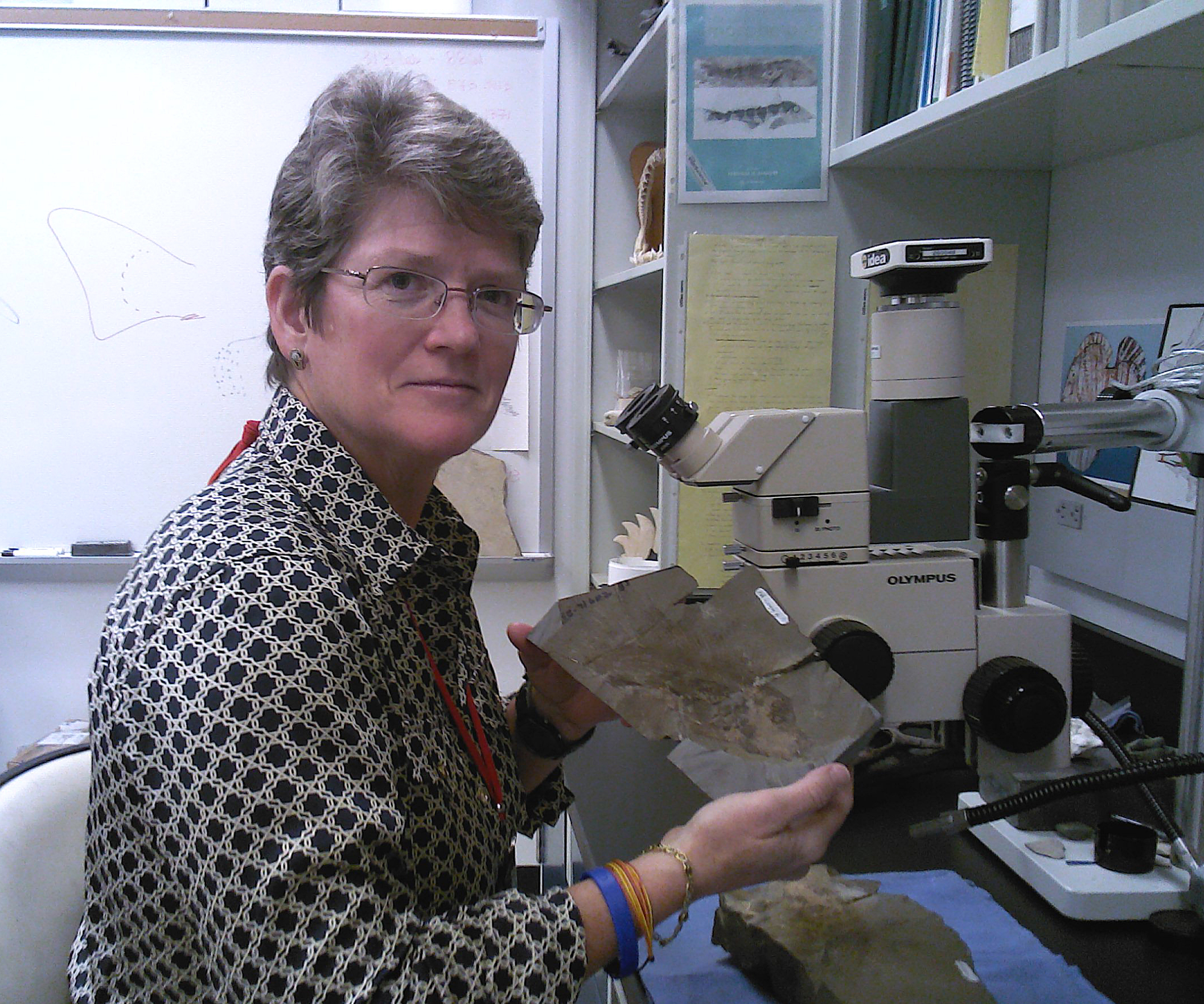Saint Joseph’s Research Team and Fossil Collection Confirm Evolutionary Branch of Entire Shark Genus
Eileen Grogan, Ph.D., Richard Lund, Ph.D. and J.P. Hodnett, Ph.D. ’17 (M.S.) spent the last eight years confirming the evolutionary branch of an entire genus of sharks based on Hodnett’s discovery of the “Godzilla shark.”
 Photo provided by J.P. Hodnett '17 (M.S.)
Photo provided by J.P. Hodnett '17 (M.S.)
J.P. Hodnett ’17 (M.S.) was at a conference put on by the New Mexico Museum of Natural History & Science in 2013 when the attendees were invited to take a much needed break to complete field work — in this case, fossil excavation. As the researchers were called back to their sessions, Hodnett suddenly hit a denser patch of shaley limestone.
“At first, I thought what was flipped over was the cross section of a limb bone, which was exciting as no tetrapod had been found at that site before,” remembers Hodnett.
A team from the museum was able to expose more of the fossil while the rest of the meeting participants returned to their conference. The next day, Hodnett was told by the fossil preparators that the creature wasn’t a tetrapod but a large shark — a shark that was 6.7 feet long, to be exact, with fins reaching over 2.5 feet and 12 rows or razor sharp teeth. Because of these features, the specimen was unofficially dubbed the “Godzilla shark.” Now, nearly eight years after its discovery, the shark has been formally named and identified as a new species.
Finding a specimen like the Godzilla shark as a whole was highly unusual and Hodnett knew there was only one place he could go to begin classifying his discovery.
“When researchers make discoveries like this, they’re told to come see Lund and Grogan,” says Eileen Grogan, Ph.D., emerita senior research associate at Saint Joseph’s University.
Grogan and her collaborator and partner, Richard Lund, Ph.D., research associate at Saint Joseph’s, are highly sought-after scientists and a mutual powerhouse of expertise in paleontology. The pair have gained notoriety for their work in central Montana uncovering the Bear Gulch Fossil Fish Collection, whose fossils are over 323 million years old and boast the highest quality preservation possible. In fact, it’s one of the most articulate fossil collections in the world.
“The quality of preservation in our collection is unmatched and, because of that, we are able to use all the information we have in our collection to look at the anatomy of the specimen, compare it to others in our inventory and eventually move on to founding its scientific description,” she says.
As Hodnett came to pursue his master’s in biology under Grogan, the three researchers came to find his discovery was major. The Godzilla shark, or Dracopristis hoffmanorum as it has officially been named, confirms an individual evolutionary branch of ctenacanth sharks and shark-like fishes that split off from modern sharks and rays about 390 million years ago. The fact that the shark was found fully intact, rather than fragmented, allowed the researchers to better understand and recreate the diversity and transitions in its lineage.
“Discoveries like this one give us an incredible look into the series of events that had to occur for the fin-to-limb transition to take place in our evolution.”
Eileen Grogan, Ph.D., emerita senior research associate

“Discoveries like this one give us an incredible look into the series of events that had to occur for the fin-to-limb transition to take place in our evolution,” remarks Grogan. “This shark species, especially being found as a whole specimen, has incredibly significant implications for us as we piece together the evolution of the world in deep time.”
Grogan, Lund and Hodnett examined the rocky environment in which the specimen was found and studied its anatomy to determine Dracopristis likely lived in shallow lagoons and estuaries, cruising near the bottom of the waterways to ambush its prey. Its large dorsal fin spines presumably acted as a deterrent against predators.
Now that the case of the Godzilla shark has been thoroughly investigated through the better part of the last decade, Hodnett has moved on from earning his masters at Saint Joseph’s to a position as state paleontologist with the Maryland Department of Natural Resources. Grogan and Lund remain dedicated to curating their Bear Gulch Fossil Fish Collection, turning over specimens to Natural History museums in Pittsburgh, New York, Canada and many others as they make their way through the collection’s catalogue.
“People always ask us, ‘what is the most exciting discovery you have ever made,’” recalls Grogan, “and Richard always tells them, ‘the next one!’”
She goes on to explain, “without that excitement for uncovering the next specimen, we have no motivation. That’s why our motto is, ‘dig we must!’” she shares. “Because we always have to believe we are about to discover something incredible and, more often than not, those incredible discoveries lead to new understandings of where we, as vertebrates, have come from.”



